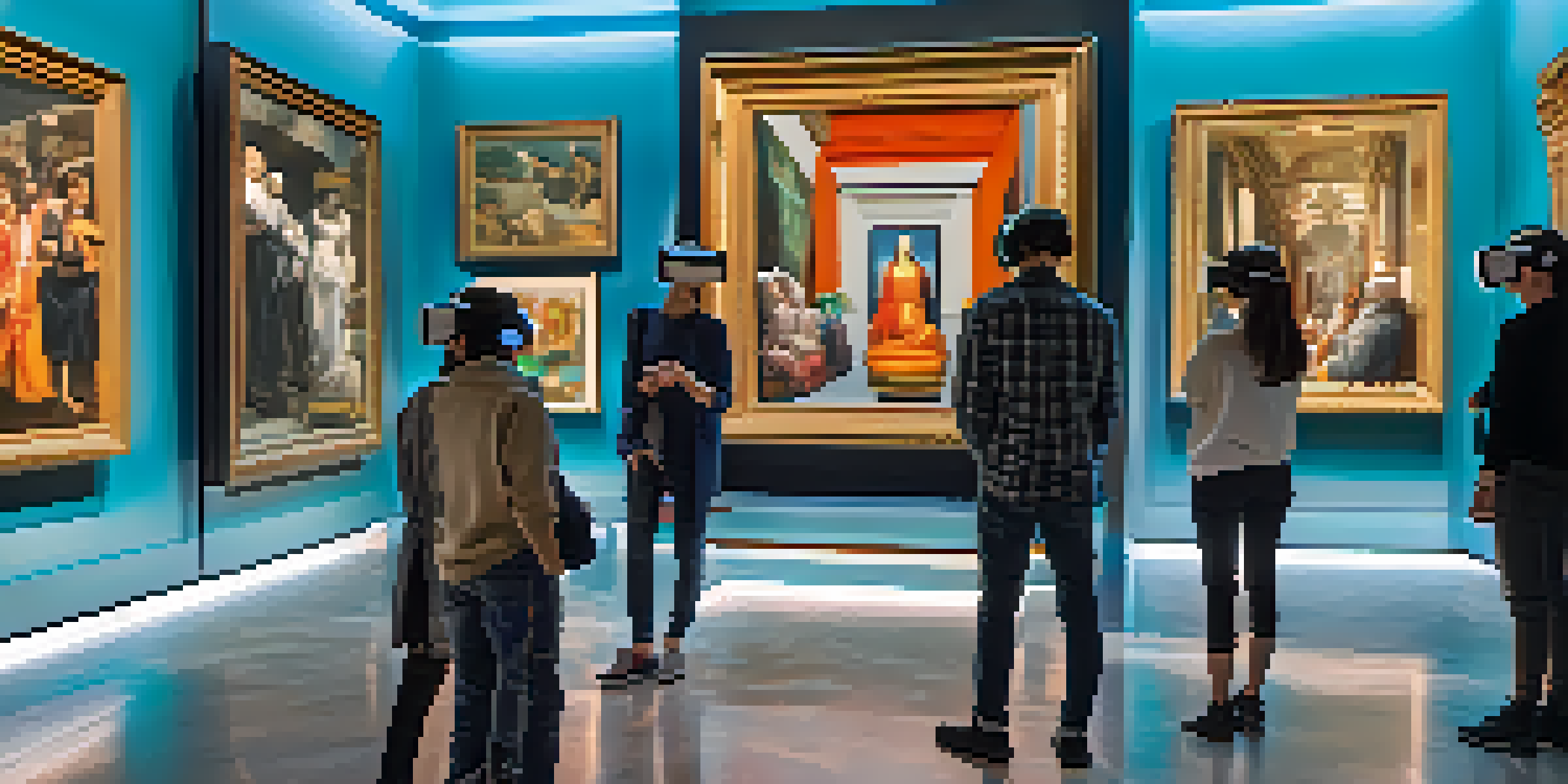How VR Enhances the Art Viewing Experience for Audiences

Understanding Virtual Reality in Art Viewing
Virtual reality, or VR, immerses users in a digital environment, allowing them to interact with art in unprecedented ways. Unlike traditional galleries, where you might feel distant from the artwork, VR places you right in the center of the action. Imagine walking through a digital museum, where you can examine pieces from every angle, just as if you were standing in front of them. This technology makes art more accessible and engaging for audiences of all backgrounds.
Immersive Experiences: Walking Among the Art
One of the most captivating aspects of VR is its ability to create immersive experiences. Picture this: you don a VR headset and suddenly find yourself standing in a van Gogh painting, surrounded by swirling colors and vibrant landscapes. This level of interaction allows viewers to connect with the artwork on a deeper emotional level. By walking among the art, audiences can experience the pieces in a way that feels personal and unique.
VR Makes Art More Accessible
Virtual reality democratizes art viewing, allowing individuals with mobility challenges or those in remote areas to experience world-class exhibitions from home.
Bridging the Gap: Making Art Accessible
VR also plays a crucial role in making art accessible to people who may not have the opportunity to visit galleries or museums. For instance, individuals with mobility challenges or those living in remote areas can enjoy world-class exhibitions from the comfort of their own homes. This democratization of art viewing helps foster a broader appreciation for various artistic styles and cultures. As a result, more people can engage with art in meaningful ways.
Enhancing Education Through Virtual Art Tours
Educational institutions are increasingly utilizing VR for art education, offering virtual tours that enhance learning experiences. Imagine students exploring historical art movements or studying famous artworks without stepping foot in a classroom. These interactive lessons make learning more engaging and memorable, as students can visualize concepts and contexts related to the art. By fostering curiosity, VR helps cultivate the next generation of art enthusiasts.
Immersive Experiences Enhance Connection
By enabling viewers to walk among artworks, VR fosters a deeper emotional connection and personal engagement with art.
Collaboration Between Artists and Technology
Artists are now collaborating with technology developers to create VR art experiences that push creative boundaries. This partnership allows for new forms of expression, where art becomes a dynamic experience rather than a static object. For example, artists can design virtual environments that respond to the viewer's emotions or movements, offering a personalized experience. Such innovations highlight the potential of VR as a medium for artistic exploration.
Social Interaction: Connecting Audiences Through VR
VR doesn't just enhance individual experiences; it also fosters social interaction among art lovers. Many VR platforms allow users to explore exhibitions together, regardless of their physical location. This shared experience can spark conversations and deepen connections between participants. By creating a sense of community, VR helps nurture a collective appreciation for art that transcends geographical barriers.
Future Innovations in VR Art
As technology evolves, we can expect more artists to embrace VR, leading to innovative practices that redefine how art is experienced.
The Future of Art Viewing: What Lies Ahead
As technology continues to evolve, the future of art viewing through VR looks promising. We can expect advancements that will enhance realism and interactivity, making art experiences even more immersive. Additionally, more artists will likely embrace VR as a medium for their work, leading to innovative artistic practices. This exciting evolution invites us to imagine a world where art is not only viewed but also lived.
Conclusion: Embracing the VR Art Revolution
In conclusion, VR is transforming the art viewing experience, making it more accessible, immersive, and engaging. From educational applications to new artistic expressions, the potential of VR in the art world is limitless. As audiences embrace this technology, they open themselves up to a richer understanding and appreciation of art. It's an exciting time for art lovers, as VR promises to reshape how we experience creativity.